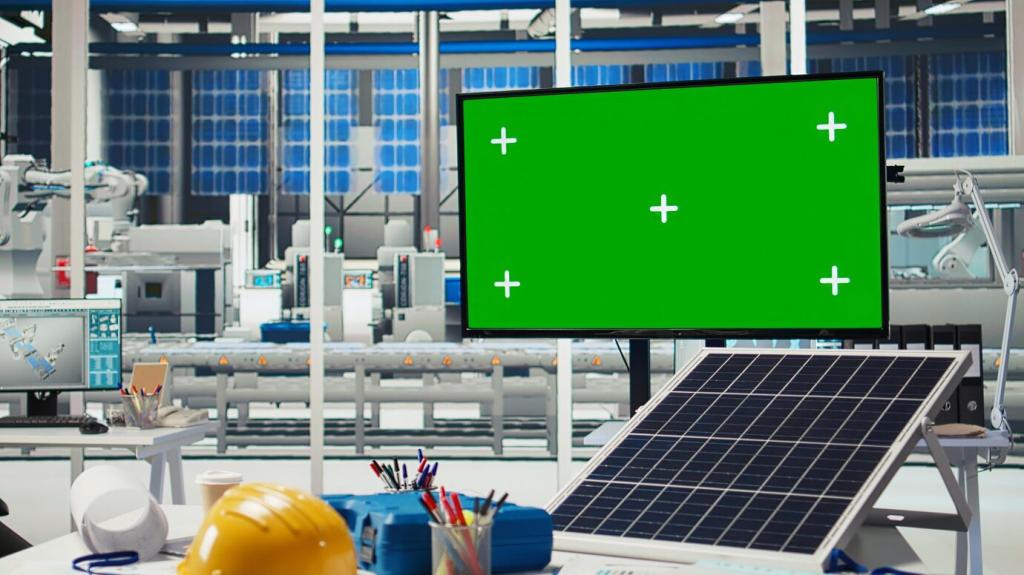AI Innovations in Home Insulation
Explore the rapidly evolving world of home insulation, transformed by artificial intelligence. This page delves into the revolutionary ways AI is reshaping the efficiency, precision, and environmental impact of insulating residential spaces, offering homeowners smarter, more sustainable options than ever before.
Machine Learning for Material Analysis
Machine learning algorithms are pivotal in analyzing vast datasets from material science research, enabling the prediction of which material combinations offer the highest insulation potential. By sifting through variables such as molecular composition, thermal conductivity, and durability, AI expedites the discovery process. As a result, these intelligent systems can suggest innovative material formulas—ranging from hybrid aerogels to plant-based composites—that would be time-consuming or impossible to find using traditional experimentation. The insights generated help companies push the boundaries of energy efficiency while prioritizing eco-friendly options.
Predictive Modeling of Thermal Properties
Advanced predictive models powered by AI can simulate how various insulation materials will behave under specific conditions long before physical prototypes are built. By modeling thermal flows, moisture resistance, and fire retardancy, these models allow scientists and manufacturers to fine-tune material properties at the design stage. This approach dramatically reduces development cycles and minimizes waste, as fewer resources are spent on unsuccessful prototypes. Homeowners ultimately benefit from products with verified performance tailored to diverse climates and local building codes.
Automation in Laboratory Testing
AI-driven automation is streamlining laboratory testing for new insulation materials. Robotic systems equipped with artificial intelligence can carry out repetitive tasks such as sample preparation, data collection, and result analysis faster and with greater accuracy than human technicians. These automated processes not only accelerate the pace of research but also reduce the likelihood of human error, ensuring consistent and reliable outcomes. The efficiency gained means cutting-edge insulation products reach the market more quickly, benefiting consumers and the environment alike.
Intelligent Assessment and Installation
Artificial intelligence is revolutionizing home energy audits by analyzing data from smart meters, infrared imaging, and environmental sensors. These AI systems can detect subtle heat leaks, pinpoint weak insulation zones, and project potential energy savings from upgrades. Homeowners receive detailed, personalized reports that include actionable recommendations, enabling them to make informed decisions on insulation improvements. This analysis offers far greater accuracy and insight than traditional methods, ultimately making homes more comfortable and energy efficient.


Embedded sensors, paired with AI analytics, now provide real-time data on a home’s insulation performance. These systems monitor temperature gradients, humidity, and heat transfer through walls, ceilings, and floors, alerting homeowners to emerging issues such as insulation settlement, moisture ingress, or hidden air leaks. By continuously overseeing these variables, AI empowers proactive maintenance and preserves thermal efficiency, helping to prevent expensive and energy-draining problems from developing over time.

AI uses the collected performance data to intelligently predict when insulation maintenance or upgrades will be needed. Rather than relying on fixed schedules or waiting for problems to become obvious, these algorithms analyze wear patterns, environmental shifts, and historical performance to trigger maintenance alerts. This approach not only prolongs the lifespan of insulation materials but also further reduces energy bills by ensuring that insulation is always operating at optimal effectiveness.

Modern homes are increasingly integrating AI-powered building management systems that coordinate insulation performance with heating, cooling, and ventilation controls. These platforms allow the home’s energy infrastructure to communicate and respond adaptively; for example, adjusting HVAC output when insulation values change due to weather or maintenance work. The synergy between insulation monitoring and smart controls results in stable indoor comfort, dramatically improved efficiency, and long-term savings.
Join our mailing list
